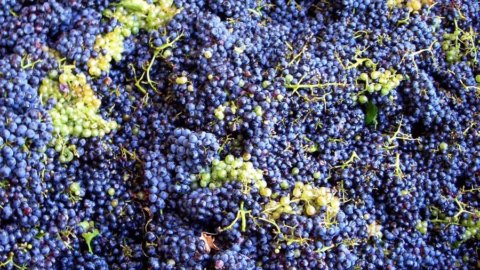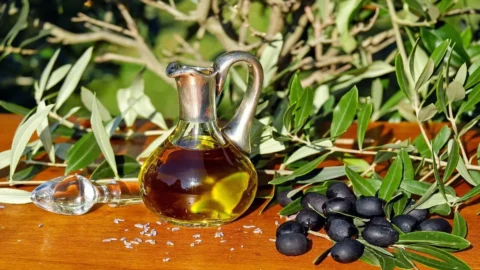Italian wine never ceases to amaze. Not only is it establishing itself more and more on international markets but now it is also able to beat adverse weather conditions and drought. While all Italian agriculture is on its knees for the lack of rain that has broken all records in recent years, the Italia vineyard, at the start of the harvest campaign, promises quality grapes from good to excellent, and with a amount in line with the average of recent years and even higher than the average of the last five years. According to the Observatory's harvest forecasts Assoenologists, Ismea and the Italian Wine Union, presented at Mipaaf, to guarantee the durability of the final product, in addition to the providential rains of August, the extraordinary work of research and application of the producers on a vine that is increasingly resilient to climatic and meteorological adversities.
The study by Assoenologi, Ismea and the Italian wine union, forecasts a 2022 production which should be around 50,27 million hectoliters of wine, the same amount as last year (50,23 million hectoliters of wine the Agea 2021 figure) and +3% compared to the average for the five-year period 2017-2021, even if the weather trend in the coming weeks remains crucial. Climatic conditions favorable to the ripening of the grapes could in fact turn the forecasts towards a positive sign, while an unsuitable climate for late-ripening varieties would have a negative effect on the harvested product.
However, the data needs to be contextualised. Fabio Del Bravo, head of the Ismea Rural Development Services Department: “In terms of markets, Italy closed the 21/22 campaign with price increases, especially in wines at the top of the qualitative pyramid. The first stages of the new campaign outline a still uncertain scenario where the many unknown factors also weigh heavily, also linked to tensions on costs and logistics, which had already created concerns for operators last year but which are now even more pressing. The good estimated production results, despite the summer fears about drought, mean that there will be availability of quality product also in this campaign and, while on the foreign front demand seems to hold albeit not with the brilliant results of 2021, on the domestic there are some signs of slowdown in purchases from modern distribution even if the recovery of away from home must be considered”.
Cotarella: the scientific approach is important, the era of sorcerers is over
“The current harvest is giving us a quality of the grapes that ranges from good to excellent – he declares Riccardo Cotarella, president of Assoenologi -. Much depends on the reference areas, never as in this season the quantitative-qualitative judgment is totally patchy and this is essentially due to an extreme climate which has heavily conditioned, in particular, the months of May, June and above all July with heat peaks that have exceeded 40 degrees and such a prolonged drought. Fortunately, in August, over most of the country - with some exceptions - 'intelligent' rains arrived, i.e. they did not cause damage, so as to allow the vine to resume its vegetative growth and bring the grapes to maturity without particular stress. But it was also there that contained the negative effects of climate changescientific approach that we oenologists have implemented in support of the vineyards. Today more than ever science and research in viticulture and in the cellar are fundamental, there is no more room for wine sorcerers' apprentices, if there ever was in the past. From here to the end of September we are confident of sunny weather, just the right amount of heat and perhaps accompanied by a light breeze, so that the grapes still to be harvested can reach perfect ripeness so as to go on to produce wines capable of establishing themselves once again on the oenological scenarios national and international".
For President of the Italian Wine Union, Lamberto Frescobaldi: "The vineyard has once again proved to be the pivot of the supply chain, demonstrating how even with heat and drought it is possible to make high quality wines and satisfactory volumes. A round of applause also goes to companies and producers, who have once again helped plants to cope with climate adversities in the best possible way. But the game does not end with the harvest, because especially in such a delicate economic phase the awareness that we can and should do better in terms of the value of our wine is increasingly emerging. The much-touted production record is in fact not a sufficient condition for generating wealth: the "value yields" of the Italian vineyard - according to an analysis carried out by the Uiv Observatory - register clearly lower performances than the French ones, which marks a triple profitability for each cultivated hectare (16,6 thousand euros vs 6 thousand) and for each hectoliter produced (294 vs 82 euros). We still need to go a long way to ensure profitability that is directly proportional to the quality produced, with a path that starts from a more rational governance of the sector in terms of denominations of origin up to common wine. We must aspire to write - or rewrite - a true vocational map of our territories, anchored to real indicators, with few but clear rules for all the subjects involved, from producers to control bodies to end up with the trade and consumers".
The Italian regions that record the greatest production, Trentino AA: and Sicily in the lead for quality
It also remains stable classification of the Italian Regions, headed by Veneto which, with 11,5 million hectoliters, alone produces over 1/5 of Italian wine. Apulia and Emilia-Romagna follow, with respectively 10,6 and 7,4 million hectoliters, for a total product of the three Regions equal to 59% of the entire Italian vineyard
With regard to the quality, in general they expect excellent wines in Trentino Alto Adige and Sicily, while aiming the bar at the "excellent" Piedmont, Val d'Aosta, Friuli Venezia-Giulia, Tuscany, Lazio, Umbria, Abruzzo, Molise, Puglia and Sardinia, with Liguria, Emilia-Romagna, Marche, Campania, Basilicata and Calabria more cautious on “good/very good” forecasts. On the other hand, the expectations for the Lombard and Veneto labels are "good".





